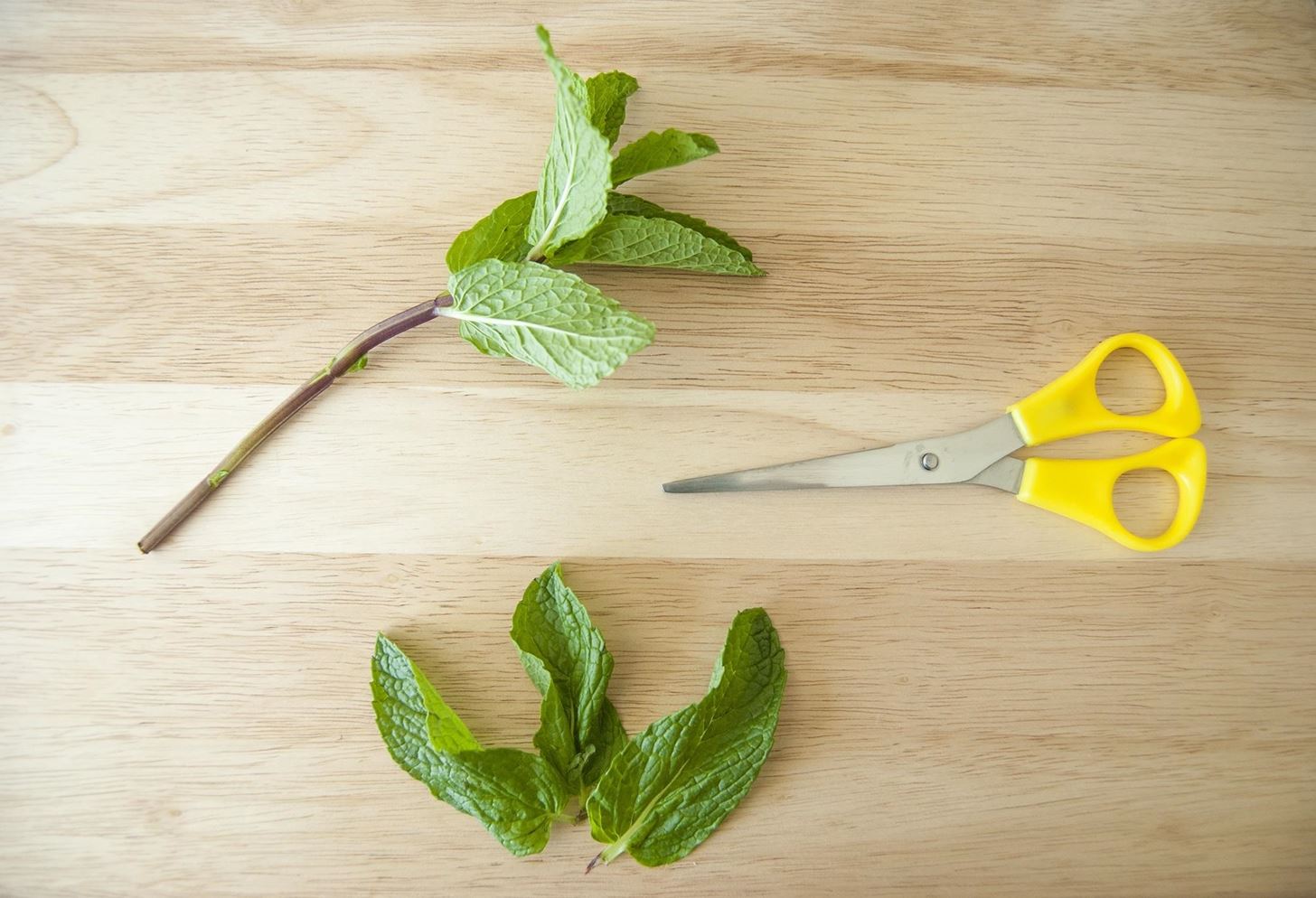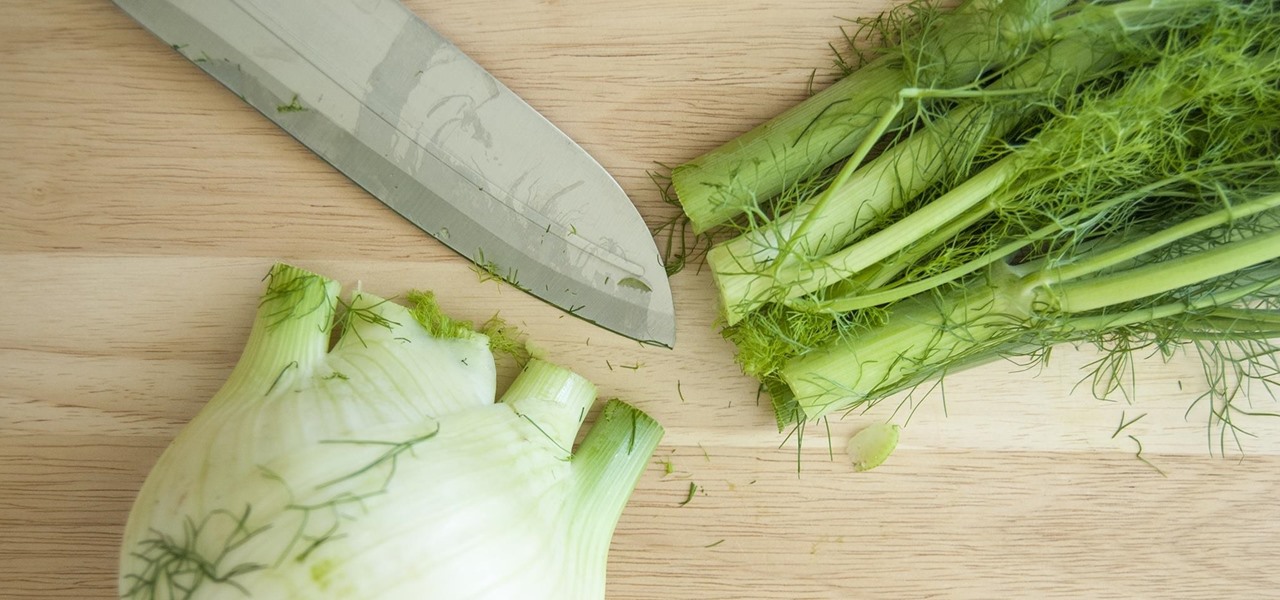Fresh herbs are a surefire way to enhance a dish, but buying them at the store each time you need them is costly. Luckily, growing your own herbs is a lot easier than it seems: You can even using cuttings from the herbs you already buy to start your own little herb garden.
And because these herbs can be trimmed as needed for space, they're versatile to boot: they can be grown both indoors near a window and in an outdoor garden.
- Don't Miss: 10 Vegetables You Can Eat Once & Regrow Forever
Here are 10 different varieties that you can use to easily create your own do-it-yourself herb garden.
1. Mint
This easy-to-grow perennial herb is popular with beginning gardeners, as it flourishes in both warm and cool climates. Use it to make refreshing mojitos during summer.
Directions:
- Snip a stem off the mint plant so it measures about 3 inches lengthwise just below the leaf node (where the leaves begin to grow). Remove the lower leaves for use in your recipe, but leave on a handful at the top.

- Place the stem in a glass of water on a windowsill that receives plenty of light. Your mint will develop roots within a couple of weeks. Be sure to change out the water when it starts to look murky to keep your plant healthy.

- Once the roots have grown in, plant the mint in a pot with soil and continue to water as necessary.
Note: Mint develops runners, which makes it spread quickly throughout a garden. To avoid having your plant patch overrun, grow it in individual pots.
2. Chives
Similar to mint, chives are another great "starter herb" for cooks just starting out in home gardening. As a milder cousin of onions and green onions, they're great in a salmon chive spread like this one from Sunset .
Chives don't grow well from cuttings, but they can be grown from a bulb, similar in appearance to green onions. You are most likely to find chives still attached to the bulb in the organic produce section or your local farmer's market.
Directions:
- Trim the green part of the chives from the top to use in your recipe, leaving 2-3 inches of green sticking up from the bulb. Plant the bulbs in a pot with ample soil.
- Place the pot near a windowsill that gets ample light and water the plant every few days—don't worry, chives are pretty drought-resistant, so you don't have to water them every day. Be sure to trim the chives when they grow too tall, or the roots won't take and the plant won't flourish.

3. Rosemary
A Mediterranean transplant, this herb is easily identifiable by its fragrant, piney scent and sharp flavor. It is a great addition to pork chops and other roasted meats and vegetables (chicken and potatoes, anyone?).
Directions:
- Snip a sprig of rosemary from 2-3 inches off the top of the plant, since this is where the freshest parts are located. Carefully pull away the lowest leaves, leaving only those at the top. This allows the plant to focus on nourishing and growing the roots, instead of feeding the leaves.

- Place the sprigs in a small glass with the stem fully immersed in water on a windowsill. Change the water every few days and rinse the stems at the same time. Practice your patience: rosemary is slow to produce new roots and easily takes 2 months or longer before you see any progress. Once the roots appear, wait to transfer the plant to soil until a week or so: roots grown in water tend to be weaker and need more time to sturdy up before they can be planted.

- Don't Miss: 10 Easy Herbal Drinks That Relieve Aches & Pains
4. Thyme
This perennial herb is an excellent addition to something like meatloaf, thanks to its subtle, earthy flavor and its ability to hold up to longer cooking times. Thyme is one of the heartier herbs, since it is drought-resistant and easily pollinates.
Directions:
The process for regrowing thyme is identical to regrowing rosemary. You can even combine the two in the same glass for space-saving efficiency.

5. Parsley
This herb is unique because it is a biennial, which means that it grows only for two gardening seasons and then dies. In its first year it produces the delicious leaves that are commonly used for sauces (like this garlic-parsley butter from Saveur), and the second year it goes to seed. A benefit of its final year are its edible roots, which are considered the most flavorful part of the plant.
Directions:
- Cut a stem of parsley to around 3-4 inches long and leave a few leaves on the top for regrowth.

- Place in a glass of water in a sunny spot on your windowsill.
- Transfer the cuttings into soil when roots appear.
6. Lemon Balm
A member of the mint family, lemon balm has a light, citrusy scent and is a welcome addition to ice tea. It's a creative addition to foods that normally call for mint, as it adds a lemony twist.
Directions:
- Cut a 2-3 inch long stem and remove all of the leaves, except the ones on top.
- Place the cuttings in a small glass bowl, making sure the waterline is below the leaves. Change the water every few days.
- After a few weeks you should see new roots; at this point, you can plant it in soil.

7. Fennel
Slightly sweet and licorice-flavored in taste, fennel instantly adds a lovely flavor to lighter meats like poultry; this recipe for fennel and lemon roasted chicken from Martha Stewart is a great example of its ability to highlight dishes without overpowering them. All in all, fennel is an important herb to have in your home garden and in your cooking regiment.
Directions:
- Cut off the fennel stalks.

- Place the fennel bulb in a bowl and make sure it is fully emerged in water. Stick the bulb in direct sunlight and change the water every few days.

- New fennel stems will grow within a few days.
8. Oregano
A beautiful perennial that does not require a lot of care, oregano is a great staple to have around your home. This herb loves the sun and is a welcome addition to Italian-based recipes, such as this fun version of cheesy garlic monkey bread.
Directions:
- Cut a stem measuring 2-3 inches long; just below a leaf node. Remove all leaves except for the ones on the top. Also, be sure to remove any flowers, since they are a drain on resources (water and sunlight).

- Place in a glass with water covering at least one of the leaf nodes (this is where the roots will come from). Roots should appear within a week.

- Transfer the plant to a pot with soil.
9. Sage
An herb that enhances breakfast sausages and roasts, sage is a sturdy plant that will bring intense flavor to your cooking. It is also ideal for growing at home because it's hearty and doesn't require a lot of care. Similar to oregano, it is sun-loving. Use it to make this delicious fettuccine with brown butter and sage from Epicurious.
Directions:
- Cut an inch or two long stem. Remove all leaves except the top ones.

- Place in a glass of water with the stem fully emerged in water. Place on a sunny windowsill and after two weeks roots should appear.

- Plant in soil.
10. Marjoram
With a delicate floral flavor, marjoram is an herb from the mint family and is a sub-species of oregano. Since the flavor is so subtle, it is best when its fresh leaves are added at the end to a dish—just like this recipe for roasted potatoes from Vegetarian Times.
Directions:
- As with most of the other herbs on this list, this herb is easily proliferated with cuttings: cut a stem a few inches long and remove all the leaves except a few from the top.
- Place in a glass of water with the waterline fully covering the stem.
- Transfer to soil when roots appear.

Give these a try and we hope you find that regrowing your own herbs from the cuttings you buy at the store is much easier than most people think.
- Don't Miss: Grow Veggies Indoors with a Tabletop Greenhouse
Next time you encounter a recipe that calls for fresh rosemary or oregano, don't forget to pick up pots and soil as well: you'll never have to buy these herbs again!
If you liked this article, follow us on Facebook and Twitter!
More Budget-Saving Hacks:
Just updated your iPhone? You'll find new emoji, enhanced security, podcast transcripts, Apple Cash virtual numbers, and other useful features. There are even new additions hidden within Safari. Find out what's new and changed on your iPhone with the iOS 17.4 update.























Be the First to Comment
Share Your Thoughts